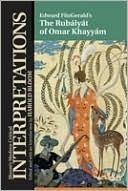Edward Fitzgerald and Other Men’s Flowers: Allusion in the Rubaiyat of Omar Khayyam. Christopher Decker.
Literary Imagination 6 (2004) 2, pp. 213-239.
One of the most arresting images called to mind in Edward FitzGerald’s Rubáiyát of Omar Khayyám is that of the corpus redivivum, the buried corpse that turns to flowers gently in the grave. The body’s separate members suffer a metamorphosis into other objects that recompose and recollect their bygone looks. Khayyám reflects: I sometimes think that never blows so red The Rose as where some buried Cæsar bled; That every Hyacinth the Garden wears Dropt in its Lap from some once lovely Head. (XVIII)
